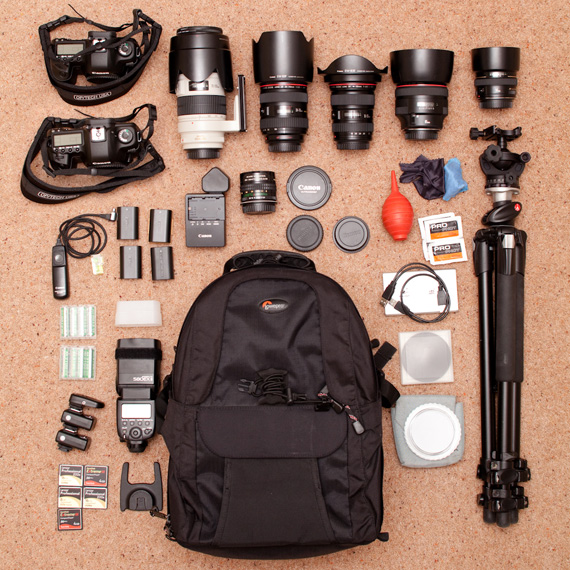Photographers—both amateurs and professionals—have one thing in common: they would never think of leaving their photography equipment at home when they travel.
Although traveling provides an awesome opportunity to capture memorable photos, few people want to cover the risk of damage to their photography equipment while on the go. So follow these tips to ensure your photography equipment stays safe.

Photo by Matthew.
1. Check your camera before packing
Make sure that everything on the camera is intact. Check the lens caps, USB covers, battery panel, etc. This will also help you notice if there has been any damage inflicted during your previous travels.
2. Don’t forget your battery charger
When packing your camera, make sure that you bring your battery charger with you. You wouldn’t want to have a trip scheduled for multiple days and have the battery dead before day one ends, and your charger’s inadvertently left at your house.
3. Have a lens and camera equipment in hand
If you’re going to take photographs in places with bad weather, your lens will need cleaning whenever you use your DSLR. A soft cloth (like the cloth for wiping eyeglasses) to clean the lens should be in your bag.
Note: Never clean a dry lens, you should breathe some moisture on the glass and then clean it.
4. Detach your lens from the camera body
If you have a camera with a removable lens, don’t travel with the lens still attached to the camera body. If you forget to detach the lens, you can cause some damage to the threads that are used to hold the lens to the camera body (if the camera shifts during your travel, pressure may be applied to the lens).
Note: Don’t forget to correctly place your lens cap, lens rear cap, and the body cap. This is to ensure that no dirt can go inside to harm any part of your camera body or lens.
5. Place your camera in a camera bag
If you have expensive equipment for your camera, you might want to buy a camera bag which has padding inside. Some of these padded bags or casings are made for various types of lenses or camera bodies, even the type of your photography-style. An example is the Case Logic SLRC-205 SLR sling bag (perfect for SLR type cameras and for the adventure photographer). However, if a specialized bag is nowhere to be found, you can pack your camera in a bag with cushions or wrap your camera before it goes inside your carry-on-bag. Also see to it that the LCD goes first. It’s best that your camera lies flat on its back to avoid stress on the lens area.
Note: If you pack your camera in a carry-on-bag with toiletries in it, be sure to place your camera inside a plastic bag to protect it from unexpected liquid spills.
6. Plastic covers
Any variety of plastic bag that can tighten over your DSLR camera’s body and seal out liquid yet still allows you to access the buttons will suffice. This is perfect for rain shoots. You can buy handy camera covers in photography supply stores. You can even use a shower cap found in your hotel to protect the camera body.
About the Author:
Mario Chow writes for a DSLR-camerabag company. They have information regarding the sturdiest, protective, easy to access bags for DSLRs.
Like This Article?
Don't Miss The Next One!
Join over 100,000 photographers of all experience levels who receive our free photography tips and articles to stay current:






This is a very silly article! Why don’t people have more than one battery? More important than a battery charger surely?
Don’t detach the lens as this will allow dirt in. Very few, if any DSLRs have a screw thread these days and you should try to minimise the times you change lenses not take them off every time you pack your camera away.
Anyone who thinks this is good advice is not really a photographer and is unlikely to own a DSLR.
Put the toiletries in a plastic bag in case of leakage not the camera, etc.
wow, great advices, thank you for this tips ! have a good day :)
Good tips but I am curious about how remembering to take your battery charger along keeps your camera safe? Yes, it keeps you from missing shots if your battery dies, but it does not keep it safe from harm.
Great advices! Thank you for heads up!
A nice start and I have dozens of small items stored in a handful of ziplock bags. And I’ll always carry a second battery charger for the camera (along with a charger for AAs, etc).